diff options
Diffstat (limited to 'content')
| -rw-r--r-- | content/blog/2024-05-03-ubuntu-on-macos.md | 100 |
1 files changed, 100 insertions, 0 deletions
diff --git a/content/blog/2024-05-03-ubuntu-on-macos.md b/content/blog/2024-05-03-ubuntu-on-macos.md new file mode 100644 index 0000000..9bf1e80 --- /dev/null +++ b/content/blog/2024-05-03-ubuntu-on-macos.md @@ -0,0 +1,100 @@ ++++ +date = 2024-05-03 +title = "Running Ubuntu Linux on macOS with OrbStack" +description = "Learn how to run Linux machines as applications on macOS with minimal hassle." +draft = false ++++ + +Being a macOS user who previously used Linux for many years, I often find myself +searching for alternatives to the Linux-native tools and methods that I had +become used to over the years. + +Luckily, there's an option to simply use Linux directly on your macOS device +without having to boot the whole device into Linux or having to SSH into another +Linux machine. + +In this post, I use [OrbStack](https://orbstack.dev/) to create an Ubuntu Linux +machine to take advantage of the Linux system. + +## Installing OrbStack + +OrbStack has a [download page](https://orbstack.dev/download) if you prefer to +use `*.dmg` files to isntall applications. + +Personally, I prefer to install everything through Homebrew. For OrbStack, run +the following: + +```sh +brew install orbstack +``` + +## Creating a Linux Machine + +Once installed, you can launch OrbStack and create a Linux machine in a matter +of seconds. This creation module defaults to Ubuntu. + + + +## Launching the Machine + +Once created, the dialog will close and you will be presented with your new list +of machines. Simply double-click on a machine to run it. + +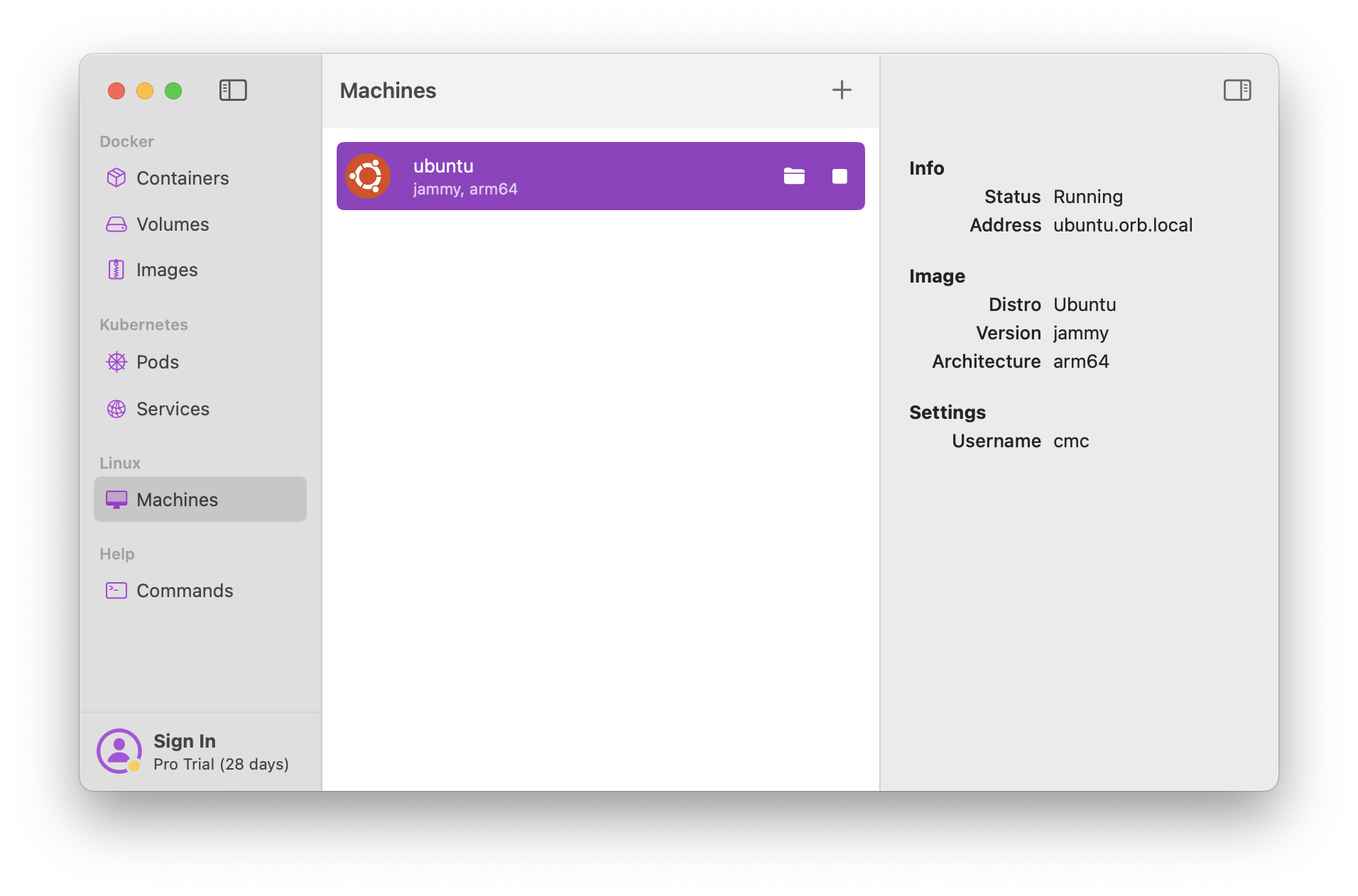 + +When you run the machine for the first time, it may warn you that a program is +attempting to run a shell script. You can choose to manually inspect this shell +script via the provided path, if you wish. When you're comfortable with the +script, toggle the `Suppress this message permanently` button and click OK to +run the machine. + + + +You will always be able to launch the OrbStack application and control the +machine via the Machines menu, but you can also use the OrbStack icon in the +macOS menu bar to quickly control the machine without launching OrbStack itself. + +## Working in Linux + +Once successful, OrbStack will launch your default terminal and log you into the +Linux machine you created above. + +In the example below, we can see that the machine is using `Linux ubuntu 6.7.11` +and operates similar to a fresh Ubuntu install on bare metal. + +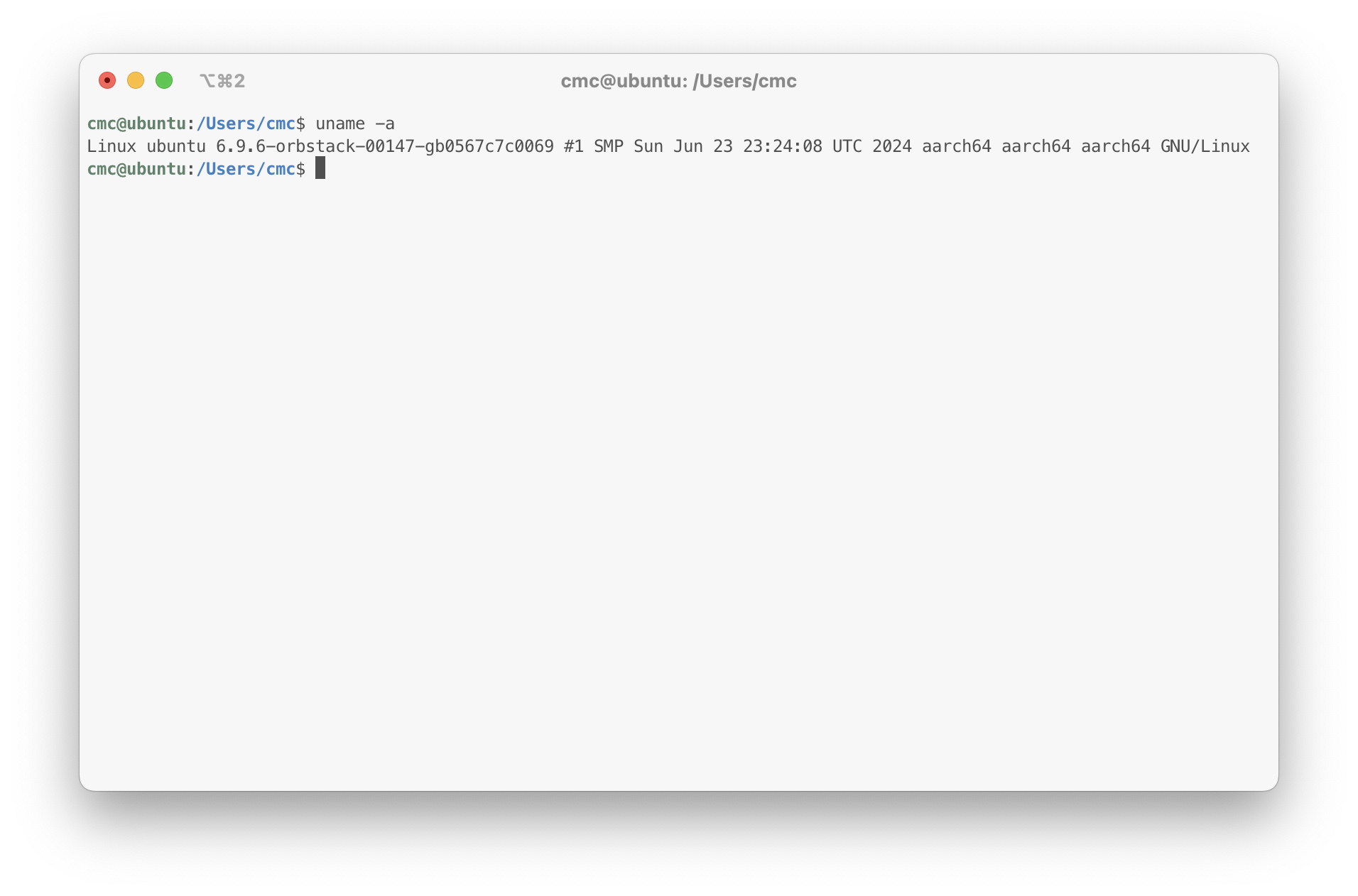 + +You can also click the machine's folder icon in OrbStack to open the machine's +file system within macOS's native Files app. Within Files, you can double-click +to open any files and they will open in the macOS defaults for those file types +(e.g., TextEdit). + +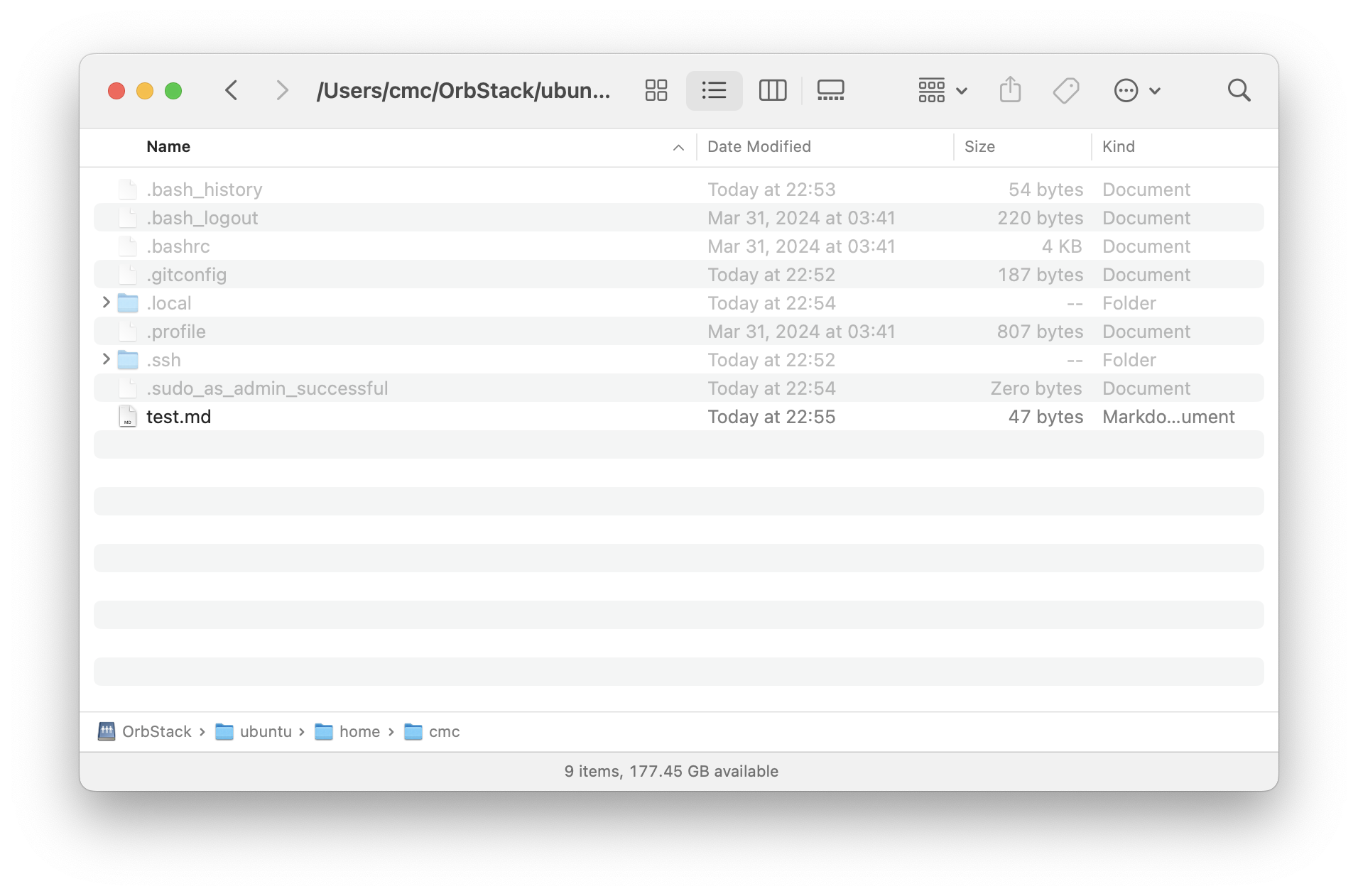 + +Here's an example of opening the `test.md` file in the screenshot above, which +defaults to opening in Xcode on my system. + +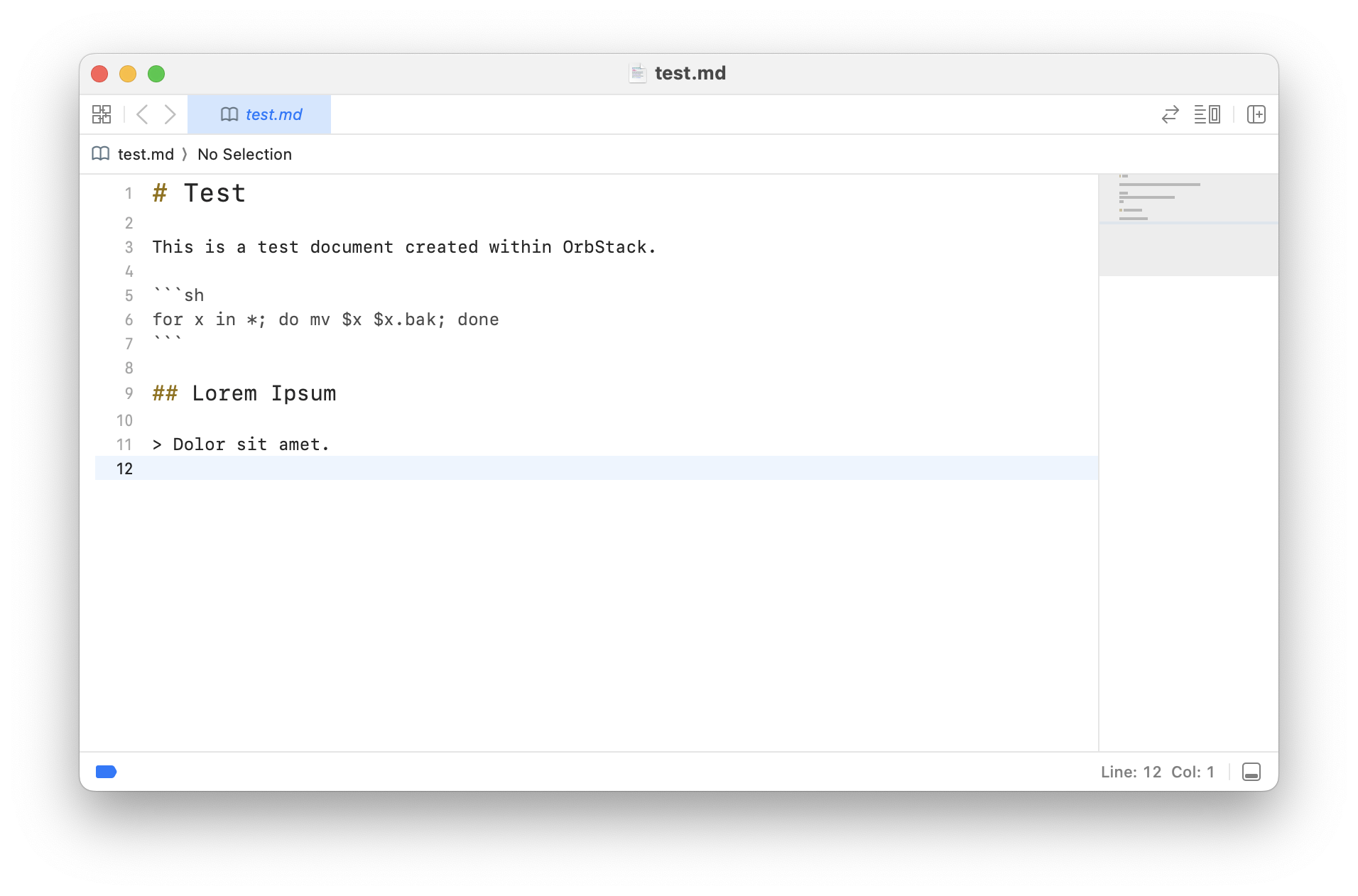 + + +### Test Examples + +As a quick example of the system, I added a `test` user, installed `neofetch`, +and switched the `test` user's shell to `zsh`: + +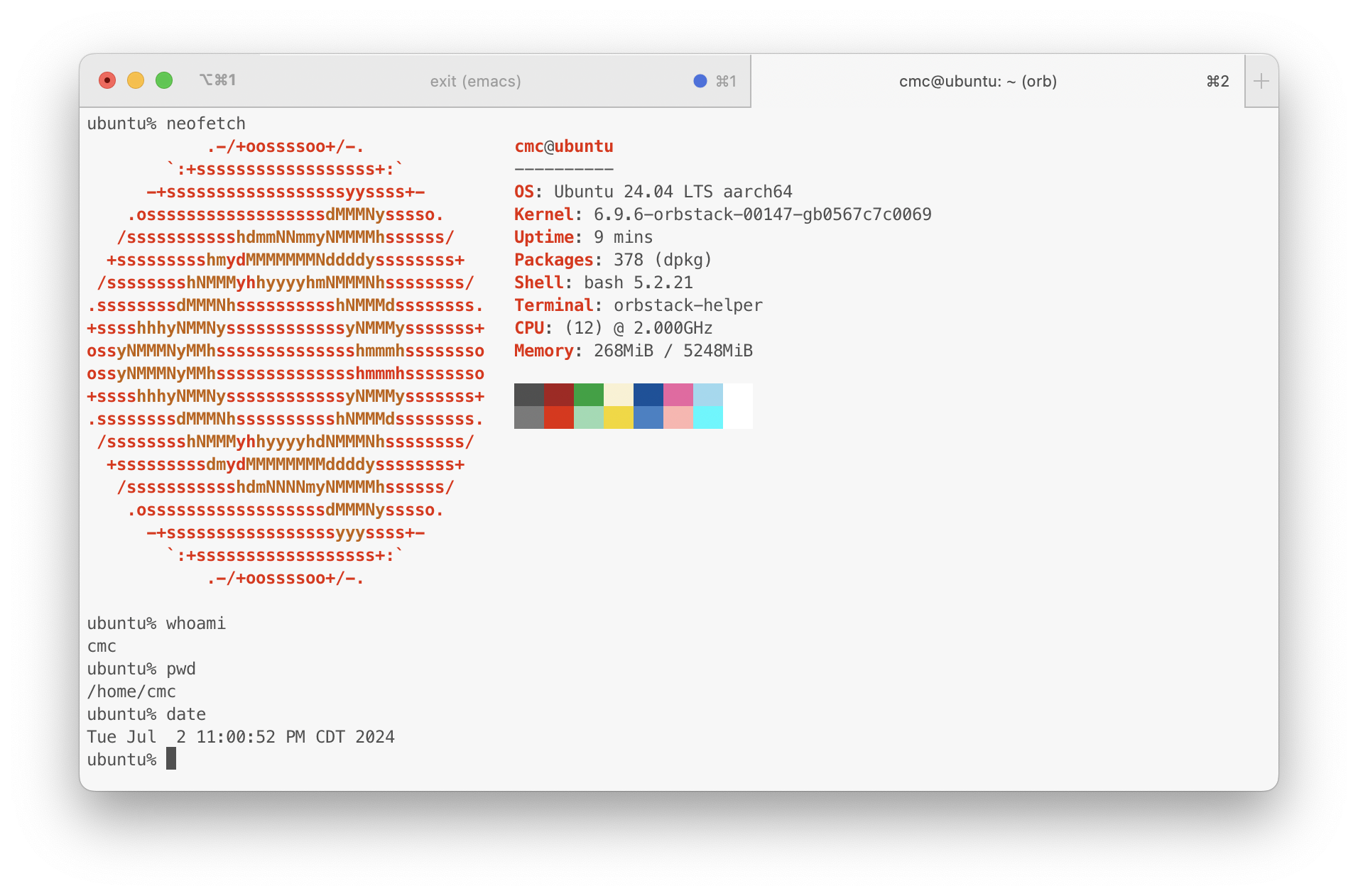 + +## Thoughts + +The installation, creation, and launch processes are seamless and provide an +easy way to test or use Linux on macOS with little to no hassle. + +The shell and file integrations are incredibly snappy and I have not experienced +any lag so far. Further, being able to open files in the Files app allows for me +to use macOS native applications, such as TextEdit for quick editing without +having to resort to other programs that may not be as familiar to macOS users. + +I love this method and will be happily looking for further use cases to apply. |
